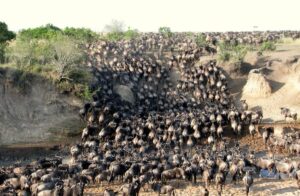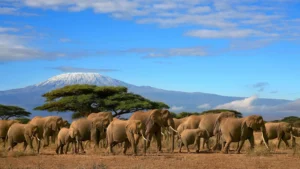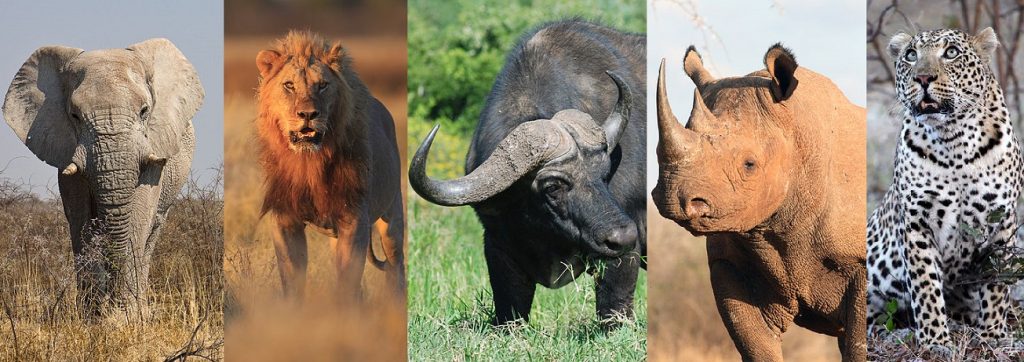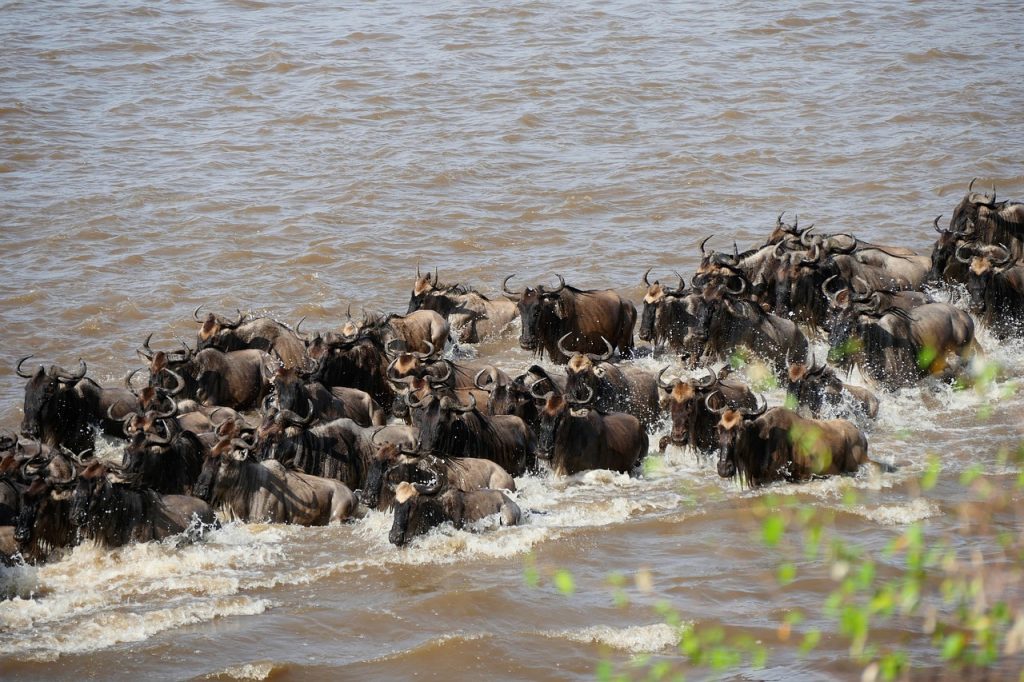Best Time to See the Wildebeest Migration in Mara River
The Mara River migration is one of nature’s most spectacular events, drawing wildlife enthusiasts from around the globe. Understanding the Mara River migration timing is crucial for planning a safari that aligns with this awe-inspiring phenomenon.
Understanding the Great Migration
Each year, over 1.5 million wildebeest, accompanied by hundreds of thousands of zebras and gazelles, embark on a journey across the Serengeti-Mara ecosystem. This migration is driven by the search for fresh grazing and water, with the Mara River presenting one of the most challenging obstacles.
Optimal Timing for the Mara River Migration
The Mara River migration timing typically falls between late July and early October. During this period, the herds cross from Tanzania’s Serengeti into Kenya’s Masai Mara, facing treacherous river crossings teeming with crocodiles and swift currents. These crossings are among the most dramatic and sought-after spectacles in the wildlife world
However, it’s essential to note that the exact timing can vary annually based on rainfall patterns. In drier years, crossings may commence as early as July, while wetter conditions might delay them until August .
Factors Influencing Migration Timing
Several elements influence the Mara River migration timing:
- Rainfall Patterns: The onset and duration of rains determine the growth of grasses, directly affecting the movement of the herds.
- River Water Levels: High water levels can delay crossings, while lower levels might prompt earlier movements.
- Predator Movements: The presence of predators can influence the pace and direction of the migration.
Planning Your Safari Around the Migration
To maximize your chances of witnessing the Mara River migration:
- Book in Advance: Given the popularity of this event, accommodations in prime locations fill up quickly during peak migration months.
- Stay Longer: Spending multiple days increases the likelihood of observing a crossing, as herds may gather at the riverbanks for days before making the plunge.
- Choose Strategic Locations: Lodges near the Mara River or in the northern Serengeti offer front-row seats to the action.
Alternative Viewing Periods
While the Mara River crossings are a highlight, other migration phases offer unique experiences:
- January to March: Calving season in the southern Serengeti, where thousands of wildebeest are born daily.
- April to June: The herds move northwest towards the Grumeti River, offering quieter viewing opportunities.
- November to December: The migration returns south, traversing the eastern Serengeti plains.
Conclusion
Understanding the Mara River migration timing is pivotal for an unforgettable safari experience. By aligning your travel plans with the migration’s peak periods and considering the factors influencing its timing, you can witness one of nature’s most remarkable events — a true framat adventure that stays with you for a lifetime.












